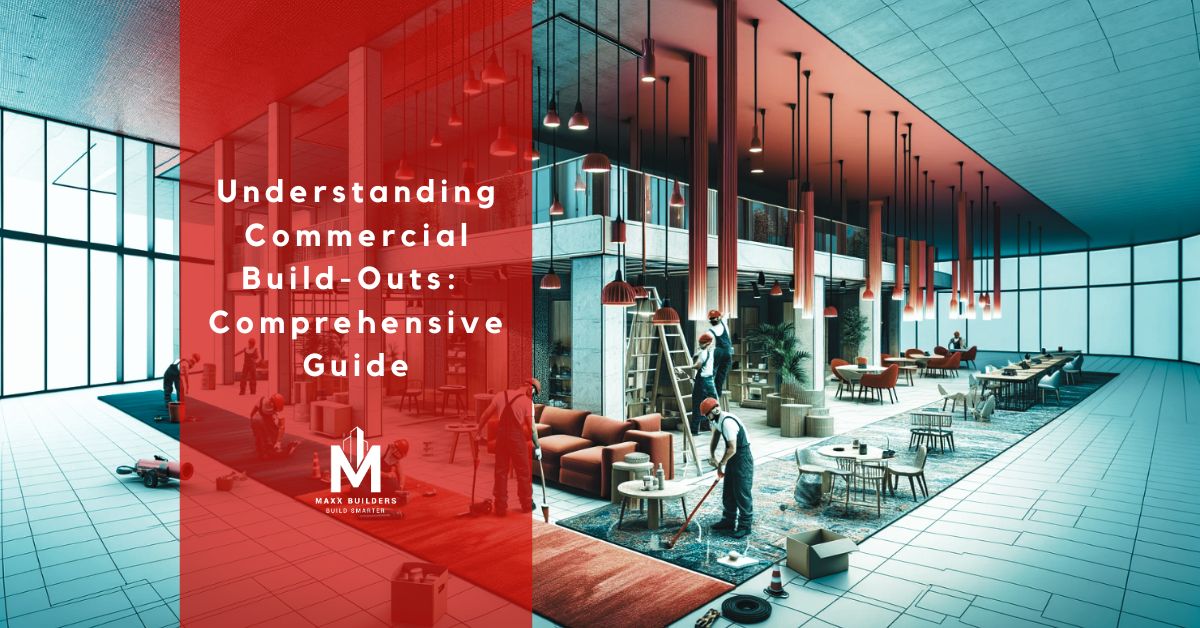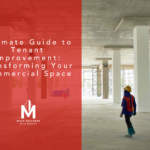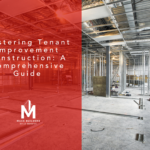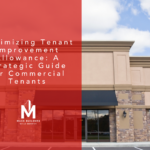Introduction
Commercial build-outs are a pivotal aspect of setting up or renovating a business space. They involve transforming a commercial property into a fully functional space tailored to the specific needs of a business. Whether you’re a startup moving into your first office or a seasoned business undergoing renovation, understanding the intricacies of commercial build-outs is essential for making informed decisions and ensuring a successful project. This guide will delve into what commercial build-outs involve, their costs, and best practices to help you navigate the process seamlessly.
What Are Commercial Build-Outs?
Commercial build-outs refer to the process of customizing a commercial space to suit the specific needs and preferences of a tenant. This process can include anything from installing walls and floors to customizing the electrical and plumbing systems. The goal is to create a space that not only meets the functional requirements of the business but also reflects its brand and aesthetic.
Understanding the Process of Commercial Build-Outs
Initial Consultation
The journey of a commercial build-out begins with an initial consultation between the tenant and a build-out contractor. This discussion focuses on understanding the business’s needs, budget, and desired timeline.
Design and Planning
Following the consultation, the design and planning phase kicks off. This involves architects, interior designers, and engineers who draft detailed plans and renderings of the proposed space.
Permitting
Before any construction begins, obtaining the necessary permits from local authorities is crucial. This step ensures that all renovations comply with building codes and regulations.
Construction
With permits in hand, construction can commence. This phase transforms the design on paper into reality, involving various contractors and specialists.
Inspection and Approval
Post-construction, the space must pass a series of inspections to ensure everything is up to code. Once approved, the tenant can move in and begin outfitting the space with furniture and technology.
Key Players and Their Roles
The main participants in the commercial build-out process are the landlord and the tenant. Each party has distinct interests and responsibilities:
- Landlords aim to lease their spaces with as few changes as necessary to minimize costs and maintain flexibility for future tenants.
- Tenants seek to adapt the leased space to reflect their brand identity, operational requirements, and employee needs, which might involve significant alterations.
Financial Responsibilities in Commercial Build-Outs
The question of “Who pays for what?” in a commercial build-out is answered through negotiation between the landlord and tenant. The agreement reached can significantly impact the lease’s value for both parties.
Landlord Contributions: The Tenant Improvement Allowance
Many landlords offer a Tenant Improvement Allowance (TIA), which is a specified sum towards the cost of the build-out. The TIA can cover a broad spectrum of renovations, depending on the agreement. It’s crucial for tenants to understand that the TIA has limitations and may not cover all desired improvements.
Tenant Responsibilities: Beyond the Allowance
Tenants often find that their vision for the space exceeds the TIA. In such cases, tenants are responsible for covering the additional costs. Negotiating a higher TIA is possible but may result in higher rent or longer lease terms.
Negotiating Build-Out Costs
Effective negotiation requires a detailed understanding of the desired build-out, a comprehensive cost estimate, and knowledge of the commercial real estate market. Both parties should strive for a deal that balances the tenant’s needs with the landlord’s capacity to contribute financially.
Cost-Saving Strategies for Tenants
- Prioritize Essential Improvements: Focus on changes that are critical for your business’s operation.
- Leverage Existing Features: Incorporating the space’s current elements can reduce costs.
- Negotiate with Contractors: Obtaining multiple bids and negotiating can lead to savings on construction costs.
Lease Clauses Impacting Build-Out Costs
Several lease clauses can influence the financial dynamics of a commercial build-out:
- Improvement and Alterations Clause: Defines the scope of changes the tenant is allowed to make and whether the landlord’s approval is needed.
- Surrender Clause: Specifies the condition in which the tenant must return the space at the end of the lease, which can impact the cost of reversing modifications.
- Rent Abatement: Allows tenants to forgo rent payments while the build-out is underway, offsetting some of the costs.
Innovative Financing Options for Commercial Build-Outs
Exploring alternative financing options can provide tenants with the flexibility to achieve their ideal build-out without bearing the entire financial burden upfront. These options include:
- Commercial Loans: Tenants can secure loans specifically for build-outs, offering them the capital needed while spreading the cost over time.
- Leasehold Improvements Financing: Some financial institutions offer financing directly related to leasehold improvements, which may offer more favorable terms based on the lease agreement.
- Vendor Financing: In some cases, contractors or equipment suppliers may offer financing options for their services or products, potentially at a lower interest rate than traditional loans.
These financing solutions can be particularly valuable for startups and small businesses that have clear growth potential but are still building their financial footing. By leveraging these options, tenants can negotiate from a position of strength, knowing they have the resources to fund the build-out.
FAQS
What if the landlord’s preferred contractors are more expensive than my choices?
If the landlord’s preferred contractors are more expensive, tenants can try to negotiate the use of their chosen contractors, provided they meet the landlord’s approval for quality and reliability. Presenting comparative bids that demonstrate cost savings while ensuring quality can persuade a landlord to agree to alternative contractors.
How do I handle unexpected costs that arise during the build-out process?
To manage unexpected costs during the build-out, include a contingency budget in your initial financial planning. Open and ongoing communication with your contractor to monitor the project’s progress and costs can also help identify potential overruns early. If unexpected expenses do occur, discuss them with your landlord to explore possible adjustments to the Tenant Improvement Allowance or other terms of your lease agreement.
How long do commercial build-outs usually take?
The timeline for a commercial build-out can vary widely depending on the complexity of the project, permit acquisition, material availability, and other factors. Minor renovations might take a few weeks, while extensive modifications could take several months. Setting a realistic timeline with your contractor and communicating this with your landlord is crucial.
What happens if the build-out exceeds the Tenant Improvement Allowance?
If the cost of the build-out exceeds the allotted TIA, the tenant is typically responsible for covering the difference. Planning your budget carefully and having a contingency fund for unexpected expenses can help manage any overages without significant financial strain.
Can I make further modifications to the space during my lease?
Further modifications during the lease term usually require the landlord’s approval, according to the terms specified in the lease agreement. It’s essential to review your lease’s improvement and alteration clauses to understand the permissions and restrictions on additional changes to the space.
What are some common mistakes tenants make during the build-out process?
Common mistakes include underestimating the budget, failing to account for all potential costs, overlooking the need for permits, neglecting to negotiate favorable lease terms, and not hiring experienced professionals for design and construction. Proper planning, budgeting, and professional guidance can help avoid these pitfalls.
Maxx Builders’ Expertise in Commercial Build-Outs
At Maxx Builders, we pride ourselves on our expertise in managing and executing commercial build-outs. Our team of professionals is dedicated to ensuring that each project is completed on time, within budget, and to the highest standards of quality.
Conclusion
Understanding commercial build-outs is crucial for any business looking to renovate or move into a new commercial space. By familiarizing yourself with the process, costs, and best practices, you can ensure a successful project that meets your business needs and reflects your brand. Maxx Builders is here to guide you through every step of the process, ensuring a seamless and effective transformation of your commercial space.




